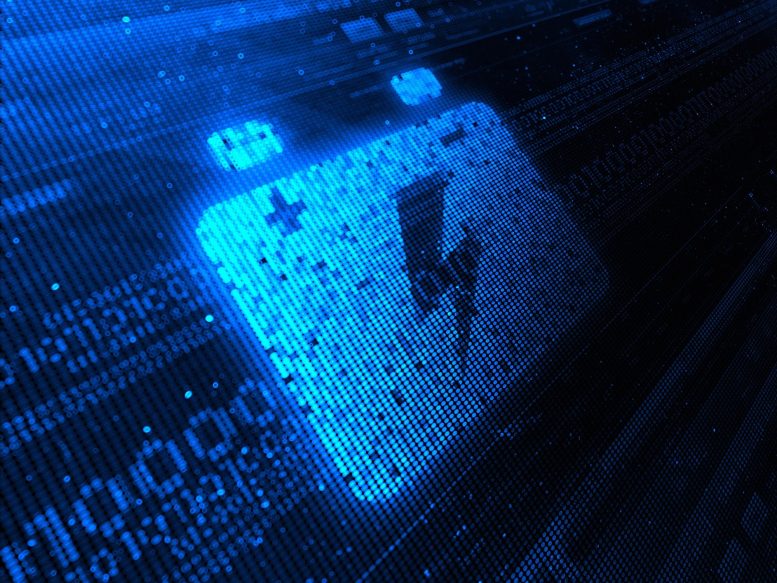
A team at Worcester Polytechnic Institute, led by Yan Wang, has developed a solvent-free, cost-effective process for producing lithium-ion battery electrodes that charge faster than those currently on the market.
New manufacturing technique tackles a key obstacle confronting the electric vehicle sector.
A research group led by Yan Wang, a researcher from Worcester Polytechnic Institute (WPI), has pioneered a solvent-free methodology for the production of lithium-ion battery electrodes. This novel approach yields greener, more cost-effective, and quicker-charging electrodes compared to those presently available, potentially revolutionizing battery manufacturing for electric vehicles.
The team unveiled a dry-print manufacturing technique in the journal Joule, which circumvents the use of harmful solvents and extensive drying periods inherent in traditional electrode production methods that utilize slurries. Wang, holding the position of WPI William B. Smith Dean’s Professor in the Department of Mechanical and Materials Engineering, stated that this innovative process is scalable and could potentially decrease electrode production expenses by as much as 15%. Moreover, the electrodes produced through this method can charge at a faster rate than those created using conventional methods.
“Current lithium-ion batteries charge too slowly, and manufacturers typically use flammable, toxic, and expensive solvents that increase the time and cost of production,” Wang said. “Our solvent-free manufacturing process addresses those disadvantages by producing electrodes that charge to 78 percent of capacity in 20 minutes, all without the need for solvents, slurries, and long production times.”
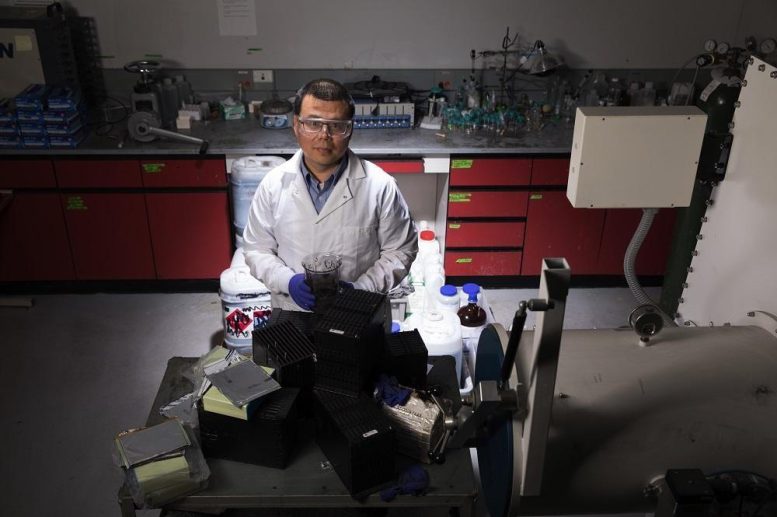
Worcester Polytechnic Institute researcher Yan Wang. Credit: Matt Burgos
Commercial lithium-ion battery electrodes are typically made by mixing active materials, conductive additives, polymers, and organic solvents to create a slurry that is pasted onto a metal substrate, dried in an oven, and cut into pieces for use in batteries. The solvents are recovered through distillation.
The researchers’ process, in contrast, involved mixing together dry powders that were electrically charged so they would adhere when sprayed onto a metal substrate. The dry-coated electrodes were then heated and compressed with rollers. Skipping the conventional drying and solvent-recovery process cut battery manufacturing energy use by an estimated 47 percent, the researchers reported.
Reference: “Roll-to-roll solvent-free manufactured electrodes for fast-charging batteries” by Yangtao Liu, Xiangtao Gong, Chinmoy Podder, Fan Wang, Zeyuan Li, Jianzhao Liu, Jinzhao Fu, Xiaotu Ma, Panawan Vanaphuti, Rui Wang, Andrew Hitt, Yavuz Savsatli, Zhenzhen Yang, Mingyuan Ge, Wah-Keat Lee, Bryan Yonemoto, Ming Tang, Heng Pan and Yan Wang, 10 May 2023, Joule.
DOI: 10.1016/j.joule.2023.04.006
Wang has long been focused on improving lithium-ion batteries and reducing the waste they create. He co-founded Ascend Elements, a company that is developing battery recycling technologies. Wang’s electrode manufacturing work has been funded by the Department of Energy with the United States Advanced Battery Consortium LLC and the Massachusetts Clean Energy Center. Collaborators on the project included Yangtao Liu ’22 (Ph.D.), graduate student Jinzhao Fu, Assistant Research Professor Xiaotu Ma, Panawan Vanaphuti ’22 (Ph.D.), and Rui Wang ’23 (Ph.D.), all of WPI; and researchers at Texas A&M University, Rice University, Microvast Inc., Argonne National Laboratory, and Brookhaven National Laboratory.
WPI has filed a patent application on the manufacturing technology developed by Wang’s team. In addition, Wang and one of his collaborators, Heng Pan of Texas A&M University, co-founded AM Batteries Inc., a venture-backed company that is working with Amperex Technology Limited (ATL) and other companies to scale up solvent-free electrode manufacturing.


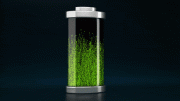
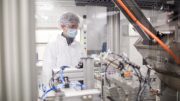
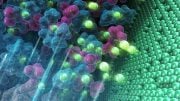
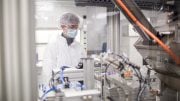
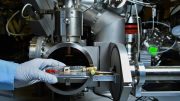
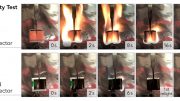

A better way to reclaim and recycle lithium batteries is overdue.
Charge to 78% in 20 minutes.
At what percentage does the battery start from?